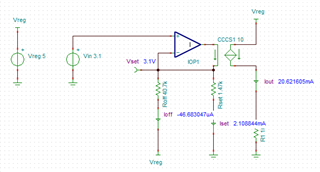Hi, support team
My customer has the questions as follow:
In the datasheet of XTR111,
shown that the XTR111 offers a low offset voltage error at the input for the signal source,
which may not deliver the 0V in a single supply circuit.
Kindly provide me the calculation for the resistor values selection as shown in Figure 44 of the datasheet.
The values for the signal source to the XTR111 input voltage range are 0.175V to 3.1V,
and the output current requirement is 0 - 20mA.
Thanks so much.
Best regards,
Yuki






